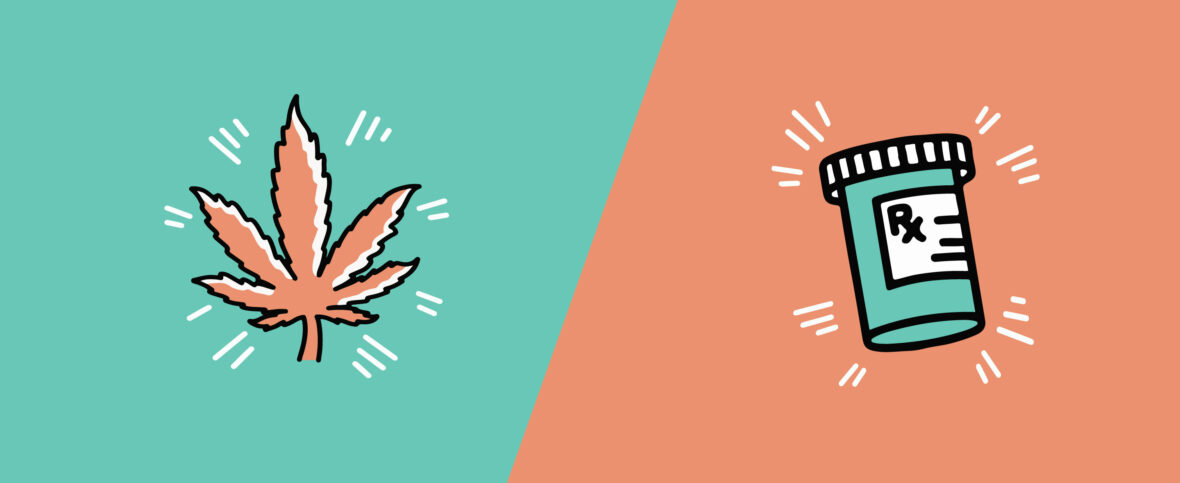See all > General health

Weed is legal now, so why use medical marijuana?
Recreational cannabis is now legal throughout Canada, but doctors continue to prescribe it for certain conditions. Now that every of-age Canadian can access marijuana, some are wondering if medical cannabis — and the extra work to become certified as a medical user — is even necessary. But when it comes to treating specific health concerns, there are several reasons for using medical marijuana.
Supply
You’ve probably seen the headlines declaring that entire provinces have run out of cannabis. And while there have been instances of medical users having trouble locating supply, many producers prioritize access to product for their medical clients. Some suppliers of medical cannabis also contacted their clients before nation-wide legalization, urging them to stock up in advance. And if specific suppliers do run out, patients are able to switch to another provider offering the product they need. They can even buy out of province, since unlike recreational users, they face no geographical limitations on purchasing product.
Currently it appears that it may take up to 18 months for supply to ramp up to meet demand. Medical users simply can’t afford to be without their medicine for that long. Keeping the two markets separate helps to prioritize medical access over recreational.
Cost
Because medical marijuana is a medicine, users can receive coverage through their insurance. Canadian veterans prescribed cannabis, for example, are eligible for reimbursement of $8.50 a gram, up to three grams a day through Veterans Affairs. But it’s not just the armed forces who have this access. Major insurers such as Sun Life and Green Shield Canada have given plan sponsors the option of adding it to their employee coverage plans. This means that organizations using these insurers can reimburse their employees for the cost of medical marijuana, just like any other prescription medication. And for those of us lucky enough to have health spending accounts, expensing medical cannabis is usually permitted.
In instances where users don’t have insurance coverage, some providers offer compassionate pricing. So while medical cannabis prices per gram are on par with or slightly higher than recreational marijuana, these providers may lower the price for medical users on disability or a fixed income.
What does medical marijuana treat?
While cannabis (both medical and recreational) is used for a variety of conditions, evidence-based research doesn’t currently support all of them. Because marijuana has been illegal for close to a century, scientists have had difficulty getting approval and funding for clinical trials. Limited trials are underway on a number of different issues, such as whether cannabis can help alleviate certain symptoms of autism spectrum disorder. But doctors are likely to be reluctant to prescribe medical marijuana for such uses. More widely accepted is the use of marijuana to treat chronic pain, chemotherapy-induced nausea and low appetite. For cancer patients and those living with AIDS, medical cannabis can help combat nausea and promote appetite, to improve quality of life while counteracting the malnutrition and wasting common with these conditions.
Medical marijuana uses
Marijuana is prescribed for conditions that can be treated by other drugs in many instances. Many of the other medications, however, have additional side effects consumers are wary of. Chronic pain is a condition treated by medical cannabis that doctors previously prescribed opioids for. Given the ongoing opioid crisis in Canada, many prefer cannabis as an alternative to highly addictive drugs such as oxycodone. And for AIDS or cancer patients, cannabis can function as a replacement for, or in addition to, other prescription medication.
Physician guidance
Doctors control prescription medication to ensure that patients are treating their condition accurately. Currently, Canadian doctors don’t prescribe cannabis unless they feel that it is the best course of treatment for the patient. Furthermore, according to the Ontario Medical Association (OMA), they must “advise patients of the material risks and benefits, effects and interactions, material side-effects, contraindications, [and] precautions.” This means that when you get a prescription for medical marijuana from a doctor, you’re also benefiting from the physician’s knowledge. They’ll explain how much to take, how it will affect you, and any other information you need to know. Your local cannabis retailer simply doesn’t have the same knowledge when it comes to treating medical issues with marijuana.
The evidence is still coming in on whether medical marijuana treats a host of different ailments. We do know, however, that it works for certain conditions. Ensuring that the medical stream remains separate from the recreational one is crucial for medical users. It means they can access a safe and reliable supply with the guidance and financial backing that they need.
The information presented here is for educational purposes and is not meant to replace the advice from your medical professional.
When using virtual care, all medical treatment is at the sole discretion of the provider. Virtual care is not meant for medical emergencies, and your provider will determine if your case is appropriate for virtual care. If you are experiencing an emergency like chest pain or difficulties breathing, for example, please call 911 or go to your nearest emergency room.
Trusted by millions of Canadians
Get started now

We're trusted by millions of Canadians
Join millions of Canadian families who enjoy 24/7 access to medical care within minutes.
Get started now4.6 score
5K+ Trustpilot reviews
Do you need medical care today?
Trusted, experienced doctors and nurse practitioners are ready to see you.
